
Whanganui: The River City of New Zealand
Discover Whanganui: A blend of natural beauty, rich history, and vibrant arts on New Zealand's west coast.
Whanganui, located on the west coast of New Zealand's North Island, is a city rich in history, culture, and natural beauty. Known for its scenic Whanganui River, the city offers a unique blend of outdoor adventures and cultural experiences. Visitors can explore the river by kayak, canoe, or paddle steamer, taking in the lush landscapes and serene waters. Art lovers will find a vibrant arts scene in Whanganui, with numerous galleries, museums, and studios showcasing local talent. The Sarjeant Gallery is a must-visit, housing an impressive collection of contemporary and historical art. The city's heritage is also on display at the Whanganui Regional Museum, where you can learn about the region's Maori and European history. For those who enjoy a stroll through nature, Virginia Lake is a tranquil retreat with beautiful gardens, a lake, and wildlife. The Durie Hill Elevator and Tower offer panoramic views of the city and the surrounding countryside. Whanganui's rich cultural tapestry, combined with its natural beauty, makes it a perfect destination for travelers seeking both relaxation and adventure.
Local tips in Whanganui
- Visit the Whanganui River early in the morning for the best experience with less crowd and calm waters.
- Check out the local farmers' markets on Saturdays for fresh produce and unique local crafts.
- Take the Durie Hill Elevator for a unique transport experience and stunning views from the top of the tower.
- Don't miss the annual Whanganui Vintage Weekend in January for a dose of nostalgia and fun events.
- If you are an art enthusiast, plan your visit around the Whanganui Artists Open Studios event held every March.
Whanganui: The River City of New Zealand
Whanganui, located on the west coast of New Zealand's North Island, is a city rich in history, culture, and natural beauty. Known for its scenic Whanganui River, the city offers a unique blend of outdoor adventures and cultural experiences. Visitors can explore the river by kayak, canoe, or paddle steamer, taking in the lush landscapes and serene waters. Art lovers will find a vibrant arts scene in Whanganui, with numerous galleries, museums, and studios showcasing local talent. The Sarjeant Gallery is a must-visit, housing an impressive collection of contemporary and historical art. The city's heritage is also on display at the Whanganui Regional Museum, where you can learn about the region's Maori and European history. For those who enjoy a stroll through nature, Virginia Lake is a tranquil retreat with beautiful gardens, a lake, and wildlife. The Durie Hill Elevator and Tower offer panoramic views of the city and the surrounding countryside. Whanganui's rich cultural tapestry, combined with its natural beauty, makes it a perfect destination for travelers seeking both relaxation and adventure.
When is the best time to go to Whanganui?
Iconic landmarks you can’t miss
Trafalgar Square Shopping Centre
Discover the joy of shopping at Trafalgar Square Shopping Centre, Whanganui's premier retail and dining destination, where local charm meets modern convenience.

Rutland Arms Inn
Discover the charm of the Rutland Arms Inn in Whanganui - a family-friendly pub and hotel offering a taste of New Zealand's warm hospitality.
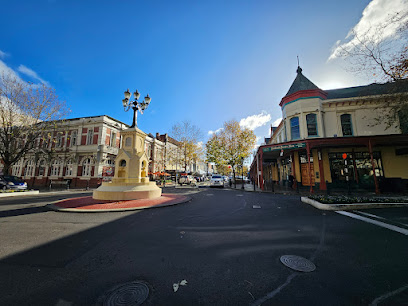
Whanganui River Markets
Discover local flavors and crafts at Whanganui River Markets, a vibrant Saturday market by the scenic Whanganui River, showcasing the best of the region.
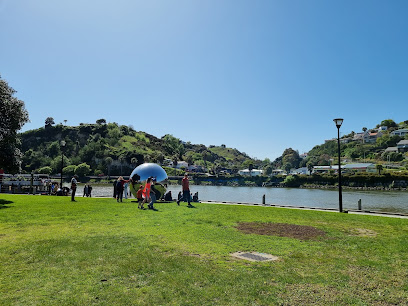
The Citadel Cafe
Discover the cozy charm of The Citadel Cafe in Whanganui, where local flavors and friendly service await in a delightful atmosphere.
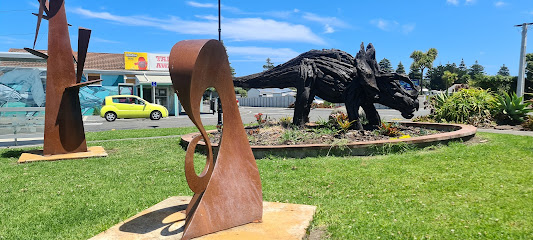
Mud Ducks
Discover the cozy charm of Mud Ducks Café in Whanganui, where exquisite coffee and delightful meals await every visitor.
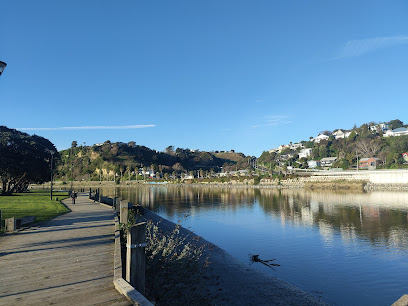
The Yellow House Cafe
Discover the heart of Whanganui at The Yellow House Cafe, where delicious food, cozy ambiance, and local charm come together for an unforgettable experience.
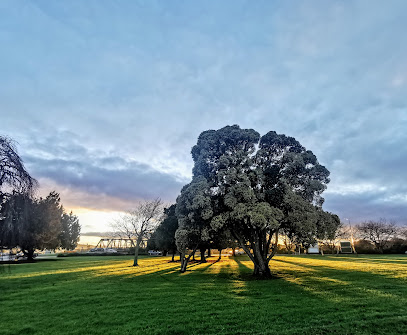
Stellar Restaurant & Bar
Experience the vibrant flavors and lively nightlife at Stellar Restaurant & Bar in Whanganui, where local cuisine meets a contemporary bar atmosphere.
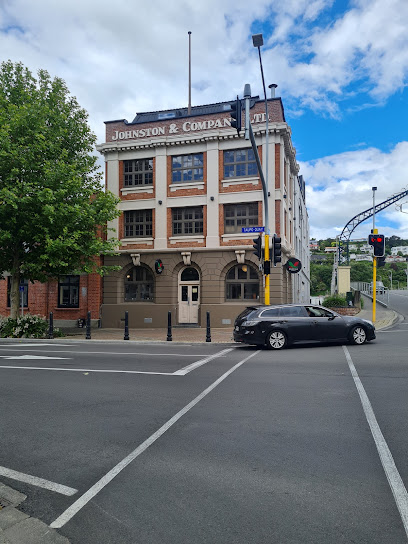
Durie Hill Elevator
Discover the rich history and stunning views of Whanganui with a ride on the iconic Durie Hill Elevator, a historical and scenic landmark.
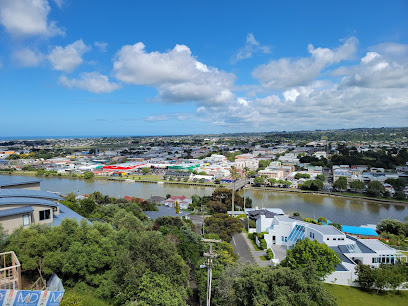
Speedway Garage & The Cobb Whanganui
Experience the vibrant atmosphere of Speedway Garage & The Cobb, a premier pub in Whanganui offering delicious meals and live sports action.
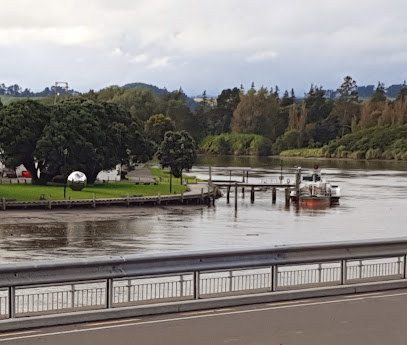
Bason Botanic Gardens
Explore the stunning beauty and tranquility of Bason Botanic Gardens, a serene escape into nature in Westmere, New Zealand.
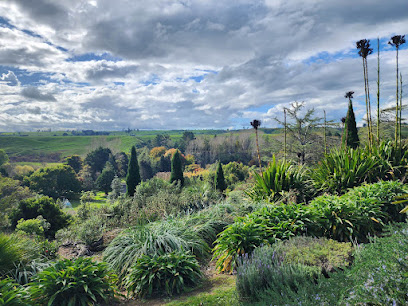
Whanganui River TOP 10 Holiday Park
Experience adventure and tranquility at Whanganui River TOP 10 Holiday Park, your gateway to exploring New Zealand's stunning river landscapes.

Whanganui Seaside Holiday Park
Discover the beauty of Whanganui at the Whanganui Seaside Holiday Park, where coastal adventures meet family-friendly accommodations.

Whanganui Regional Museum
Explore Whanganui Regional Museum: A captivating journey through history, art, and culture awaits you in New Zealand's vibrant museum.
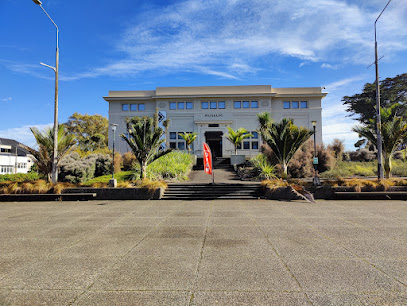
War Memorial Tower
Discover the War Memorial Tower, an iconic monument offering stunning views and rich history in Whanganui, New Zealand.
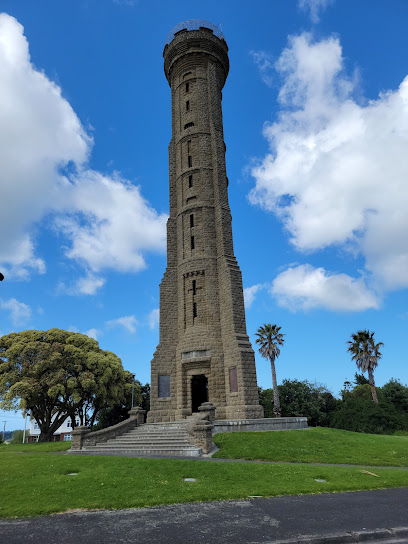
Castlecliff Beach
Explore Castlecliff Beach in Whanganui, New Zealand—a stunning coastal destination offering relaxation, recreation, and breathtaking ocean views.
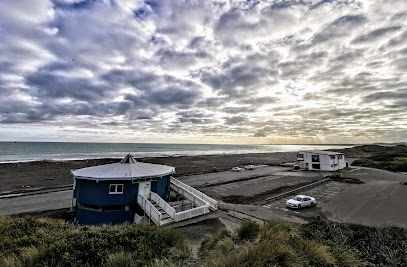
Unmissable attractions to see
Virginia Lake Reserve
Experience the tranquil beauty of Virginia Lake Reserve, a stunning park in Whanganui, New Zealand, perfect for nature lovers and families alike.
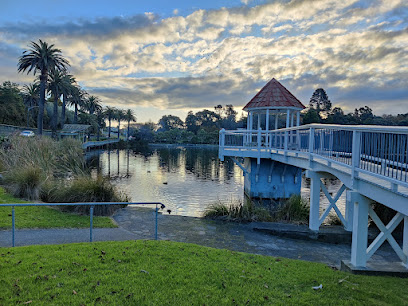
Kowhai Park Family Playground
Discover Kowhai Park Family Playground in Whanganui - a vibrant park featuring playgrounds, lush greenery, and perfect picnic spots for families.
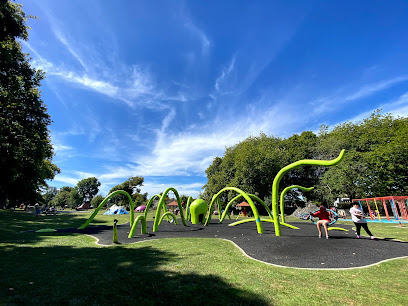
Winter Gardens
Explore the enchanting Winter Gardens in Whanganui, a botanical paradise filled with vibrant flora and serene landscapes perfect for relaxation and exploration.
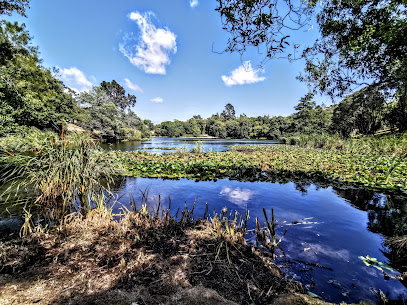
Durie Hill Elevator
Discover the historic Durie Hill Elevator in Whanganui, a remarkable blend of scenic views and rich local heritage.
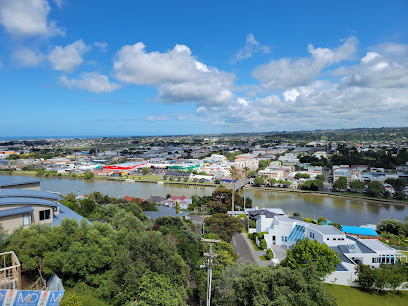
Bason Botanic Gardens
Explore the natural beauty of Bason Botanic Gardens, a serene botanical haven in Westmere, offering diverse flora and tranquil landscapes for every nature lover.
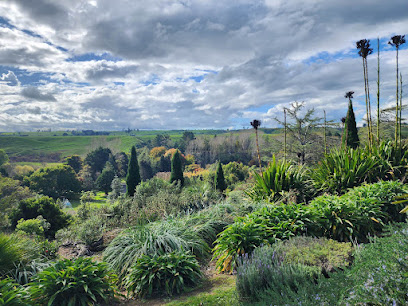
Whanganui Regional Museum
Explore the Whanganui Regional Museum for an enriching journey through New Zealand's vibrant history and culture, showcasing Māori heritage and natural wonders.
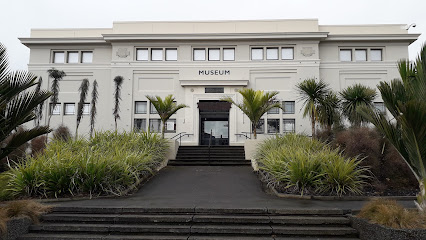
War Memorial Tower
Experience stunning views and rich history at Whanganui's War Memorial Tower, a tribute to bravery and a gateway to scenic landscapes.
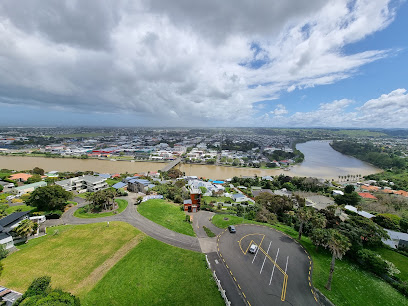
Castlecliff Beach
Discover the enchanting beauty of Castlecliff Beach, a coastal paradise perfect for families and adventurers in Whanganui, New Zealand.
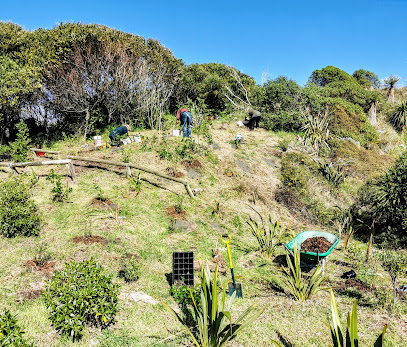
Springvale Park
Explore the serene beauty of Springvale Park, a lush green oasis in Whanganui, perfect for relaxation, picnics, and outdoor activities.
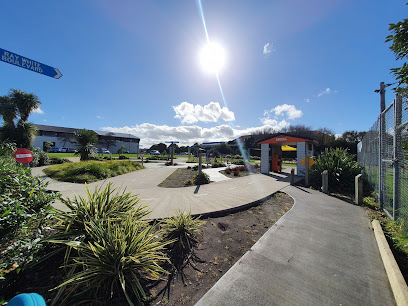
Paddle Steamer Waimarie
Discover the historic Paddle Steamer Waimarie and explore the beauty of the Whanganui River on a scenic journey through New Zealand's rich past.
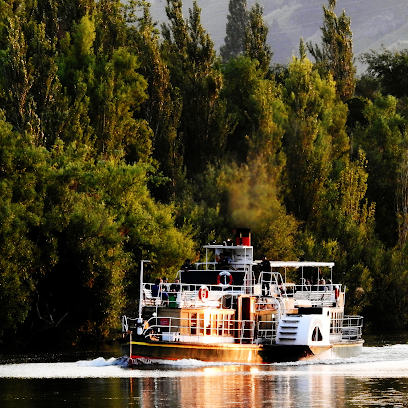
Queens Park
Discover the tranquility of Queens Park in Whanganui, where lush greens and serene landscapes create the perfect escape for nature lovers and families.

Sarjeant Gallery Te Whare o Rehua Whanganui
Discover the artistic splendor of Sarjeant Gallery Te Whare o Rehua in Whanganui, New Zealand, where history and creativity intertwine beautifully.
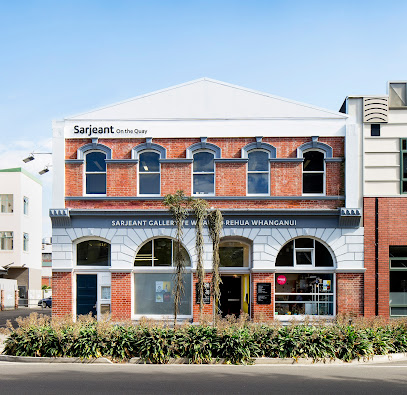
Majestic Square
Explore the tranquil beauty and cultural richness of Majestic Square, a must-visit park in Whanganui, New Zealand, perfect for relaxation and exploration.
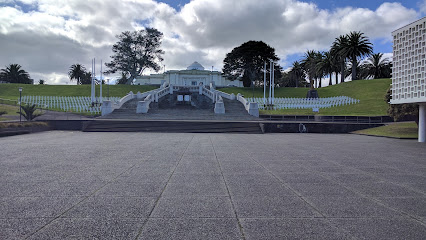
New Zealand Glassworks
Explore the enchanting world of glass art at New Zealand Glassworks in Whanganui, where creativity and craftsmanship come to life.

Quartz Museum of Studio Ceramics
Discover the enchanting world of ceramics at the Quartz Museum of Studio Ceramics, where artistry and craftsmanship come to life in Whanganui.
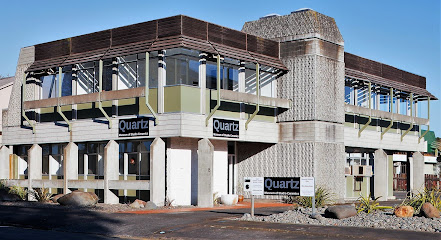
Essential places to dine
Caroline's Boatshed Bar and Eatery
Experience delightful dining at Caroline's Boatshed Bar and Eatery in Whanganui—where exquisite flavors meet breathtaking views.

Rutland Arms Inn
Discover comfort and flavor at Rutland Arms Inn - where great food meets warm hospitality in Whanganui.

Stellar Restaurant & Bar
Savor exquisite flavors and vibrant nightlife at Stellar Restaurant & Bar in Whanganui - where culinary delight meets lively entertainment.

The Brick House Restaurant & Function Centre
Discover Whanganui's culinary treasure at The Brick House Restaurant & Function Centre – where flavor meets comfort.
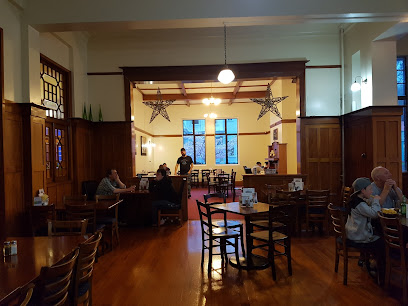
Speedway Garage & The Cobb Whanganui
Discover Whanganui's culinary gem at Speedway Garage & The Cobb—where delicious meals meet vibrant atmosphere.
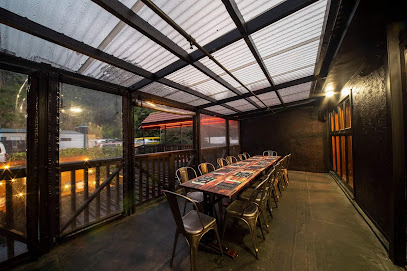
Parnells Cafe
Discover the charm of Parnells Cafe in Whanganui - your go-to spot for scrumptious breakfasts and cozy vibes.
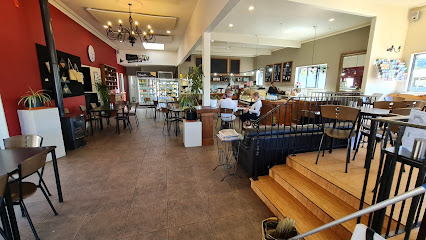
Thai Express Whanganui
Experience authentic Thai flavors in Whanganui at Thai Express - where delicious meets affordable.
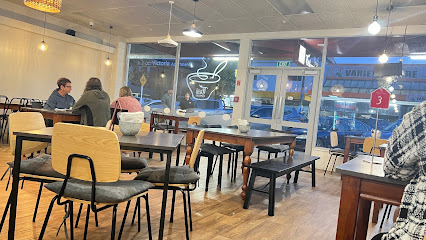
The Barracks Sports Bar Wanganui
Experience the vibrant atmosphere at The Barracks Sports Bar in Whanganui - where great food meets sports excitement.
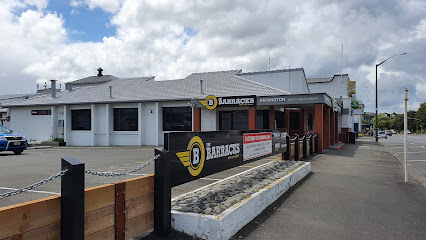
The Orange Cafe & Bistro
Experience the best of European cuisine at The Orange Cafe & Bistro in Whanganui – where taste meets tradition.
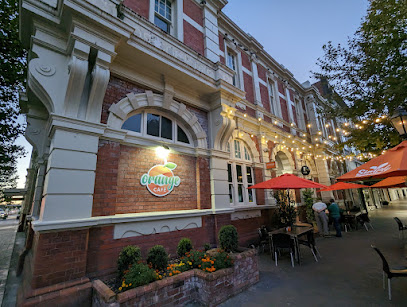
Tasty Indian
Experience the vibrant flavors of India at Tasty Indian in Whanganui – where every meal is a celebration of taste.
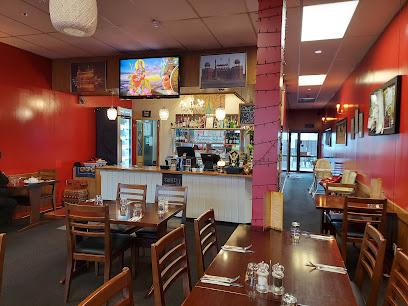
MOMIJI Japanese Restaurant
Experience authentic Japanese flavors at MOMIJI Japanese Restaurant - where sushi meets tradition in Whanganui.
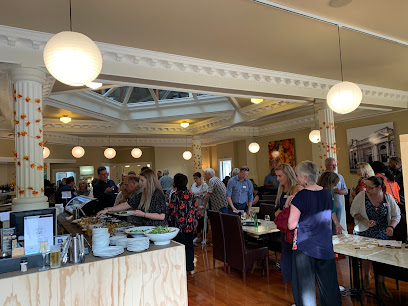
Funky Duck Cafe
Discover culinary creativity at Funky Duck Cafe, nestled in Virginia Lake Reserve - where delicious breakfasts meet stunning natural beauty.
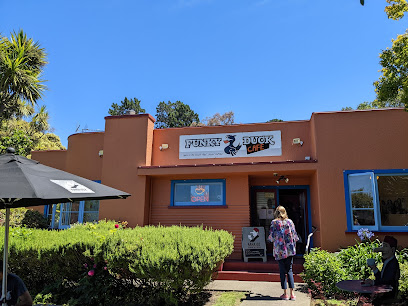
Japanese Kitchen WA
Discover authentic flavors at Japanese Kitchen WA in Whanganui – where traditional meets modern in every delicious bite.
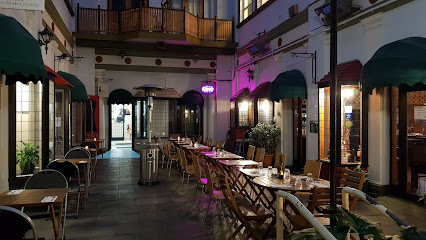
Thai Villa Restaurant
Experience authentic Thai cuisine in Whanganui at Thai Villa Restaurant – where every dish tells a story.
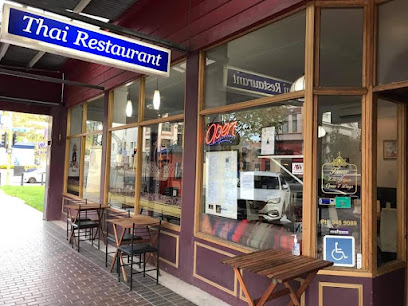
La Quattro
Experience authentic Mexican cuisine at La Quattro in Whanganui - where every dish is crafted with passion and tradition.
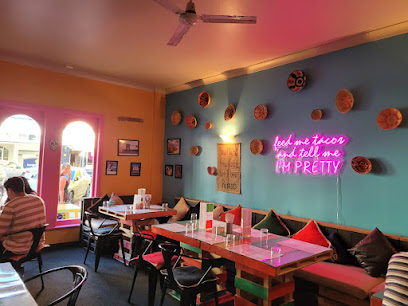
Markets, malls and hidden boutiques
Trafalgar Square Shopping Centre
Explore Trafalgar Square Shopping Centre, a lively shopping destination in Whanganui, featuring diverse shops, dining, and community events.
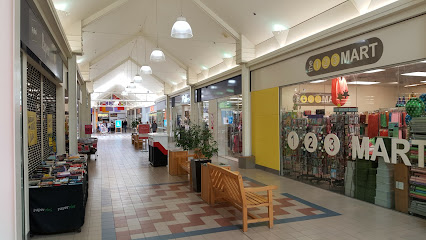
Farmers Whanganui
Discover a world of shopping at Farmers Whanganui, where quality meets variety in a delightful retail experience.
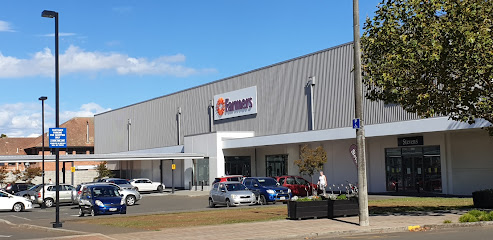
The Warehouse Whanganui
Discover a diverse shopping experience at The Warehouse Whanganui, your go-to destination for clothing, home goods, toys, and more in New Zealand.
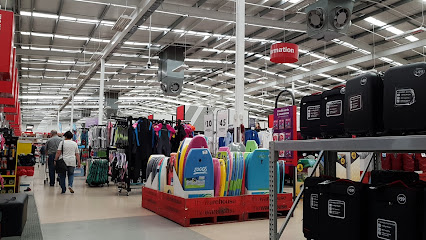
Sunny's Variety Stores
Discover a diverse range of goods at Sunny's Variety Stores in Whanganui, where shopping meets local culture and unique finds await every visitor.
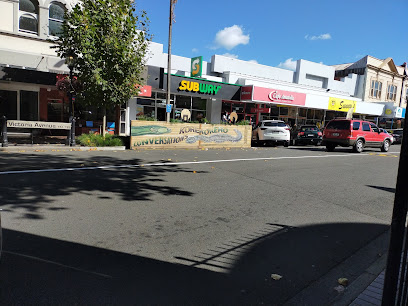
Wanganui East Hospice Shop
Experience the charm of thrift shopping at Wanganui East Hospice Shop, where every purchase supports local hospice care and unique finds await.
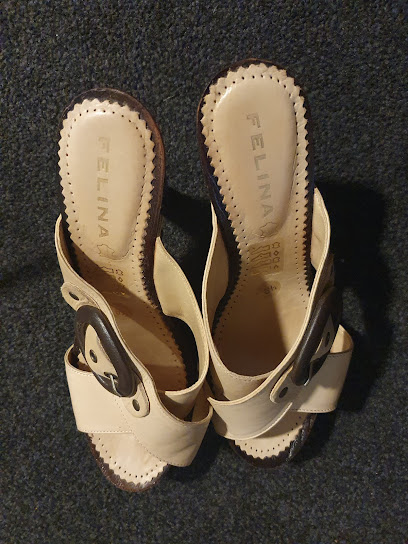
Kathmandu Wanganui
Explore the great outdoors with high-quality gear from Kathmandu Wanganui, your premier outdoor clothing and equipment shop in Whanganui.
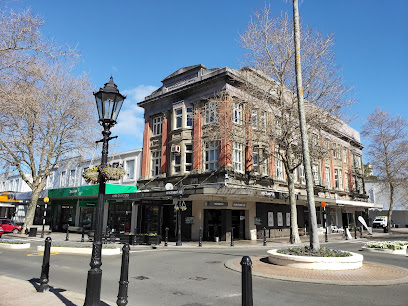
Cotton On
Discover trendy clothing and stylish accessories at Cotton On in Whanganui, perfect for all fashion lovers visiting New Zealand.
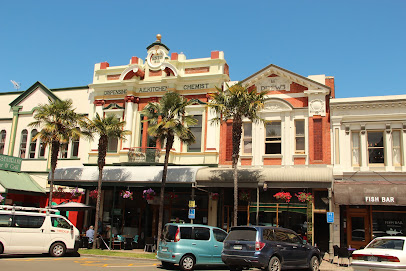
Coin Save Wanganui
Experience the unique shopping delights at Coin Save Wanganui, your go-to variety store in the heart of Whanganui, New Zealand.
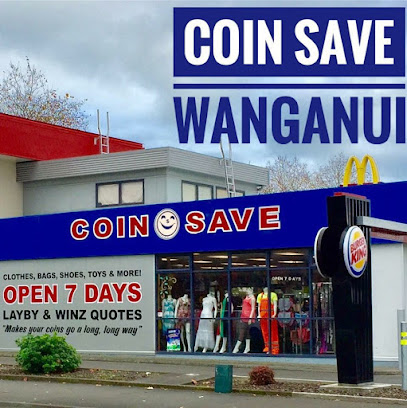
Postie Whanganui
Shop stylish apparel for the whole family at Postie Whanganui, where fashion meets affordability in a vibrant shopping experience.
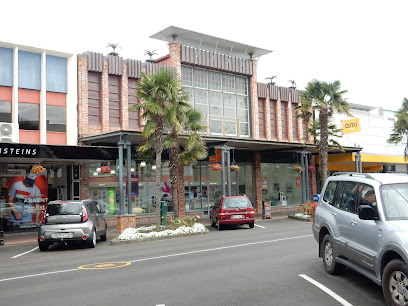
Q VARIETY STORE WHANGANUI
Discover a treasure trove of unique gifts and local products at Q Variety Store in Whanganui, a must-visit for every traveler.
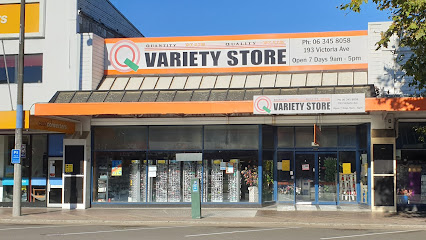
La Station Design Store
Explore La Station Design Store in Whanganui for a unique selection of stylish furniture and decor, showcasing local craftsmanship and international designs.
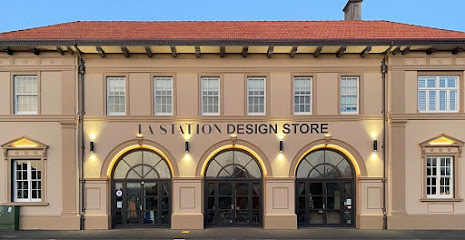
Victorias Treasures
Explore Victorias Treasures in Whanganui for unique gifts and local artisan crafts that embody the spirit of New Zealand.
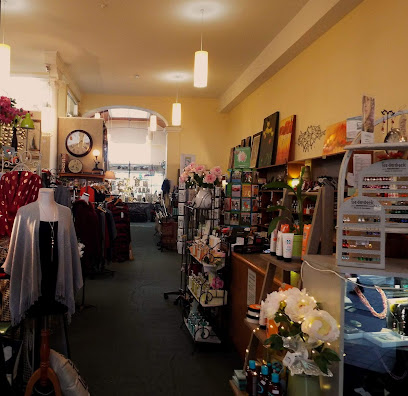
Bamboo on the Quay
Explore the charm of Bamboo on the Quay, a unique gift shop in Whanganui, offering local treasures and artisanal crafts for every taste.
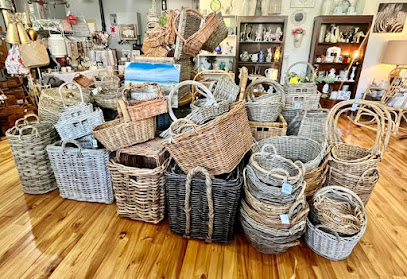
Country Lane Originals
Explore the charm of Whanganui at Country Lane Originals, a gift shop filled with unique, locally crafted treasures perfect for every traveler.
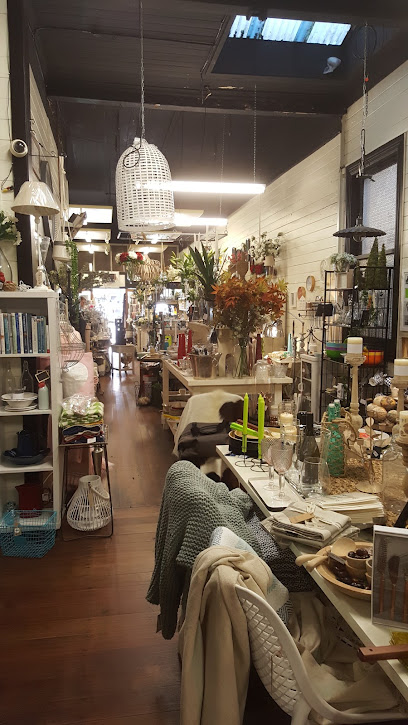
Just Looking
Discover unique women's fashion at Just Looking in Whanganui, where style meets personalized service in a charming boutique setting.
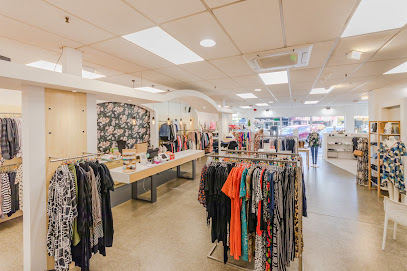
Essential bars & hidden hideouts
Caroline's Boatshed Bar and Eatery
Discover Caroline's Boatshed Bar and Eatery, a family-friendly grill and pub offering delicious food and stunning river views in Whanganui.
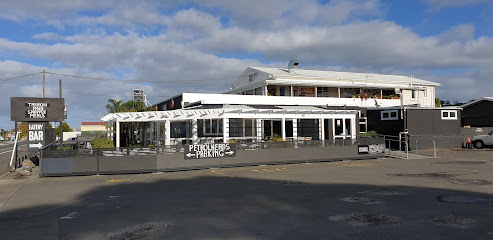
Rutland Arms Inn
Discover Rutland Arms Inn, a charming pub and family restaurant in Whanganui, offering delicious food and warm hospitality in a cozy atmosphere.

Stellar Restaurant & Bar
Experience the best of Whanganui's culinary scene at Stellar Restaurant & Bar, where great food meets vibrant nightlife in a welcoming atmosphere.
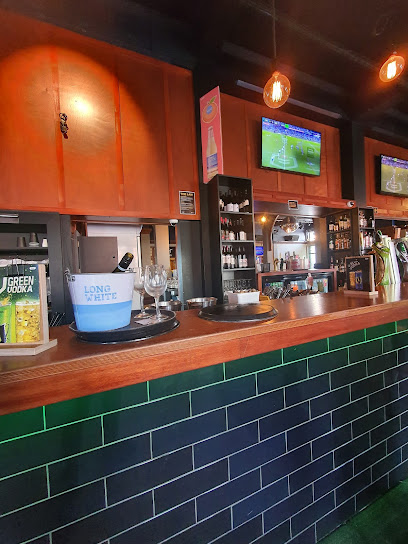
The Brick House Restaurant & Function Centre
Experience the flavors of New Zealand at The Brick House Restaurant & Function Centre, a culinary delight in Whanganui's vibrant dining scene.
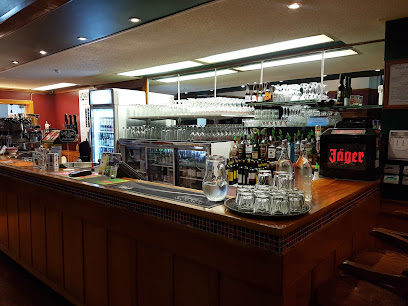
Speedway Garage & The Cobb Whanganui
Discover the lively atmosphere and delicious offerings at Speedway Garage & The Cobb Whanganui, a family-friendly pub in the heart of Durie Hill.
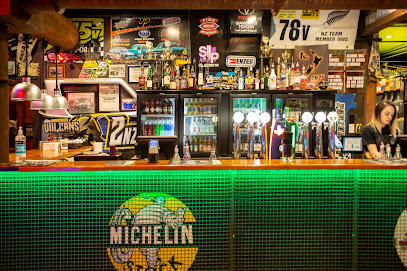
The Barracks Sports Bar Wanganui
Experience the best of grill cuisine and live sports at The Barracks Sports Bar in Whanganui, where great food meets an electrifying atmosphere.
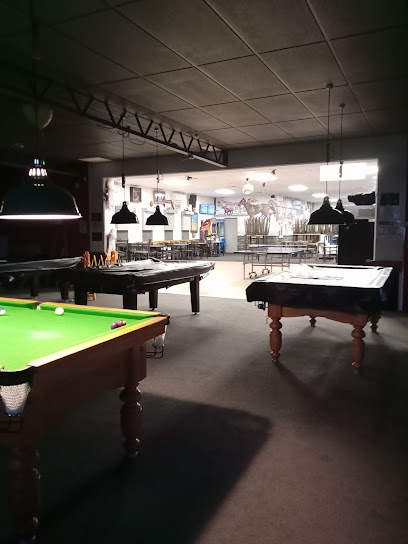
Frank Bar + Eatery
Experience the culinary delights and vibrant nightlife at Frank Bar + Eatery, a premier dining destination in Whanganui, New Zealand.
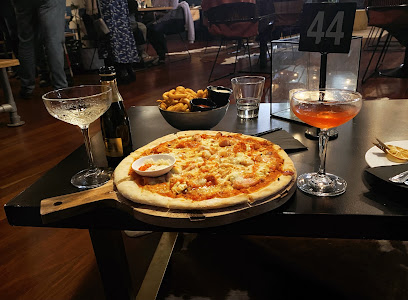
Castlecliff Club Inc
Experience the warmth of local hospitality at Castlecliff Club Inc, a charming bar in Whanganui, perfect for unwinding after a day of exploration.
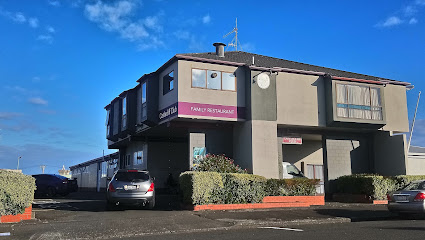
High-Kut Bistro
Discover the heart of New Zealand's cuisine at High-Kut Bistro, Whanganui's premier dining destination, blending local flavors with a contemporary twist.
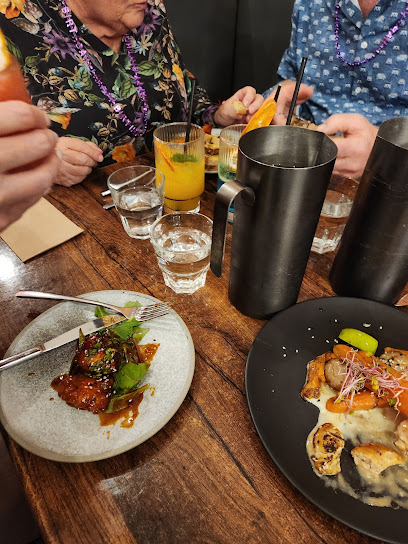
Maria Lane Eatery & Bar
Discover the culinary gems of Whanganui at Maria Lane Eatery & Bar, where local flavors meet a vibrant atmosphere.
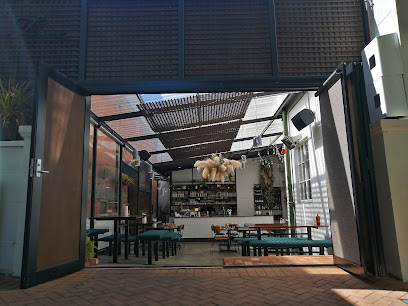
Porridge Watson
Discover the charm of Porridge Watson in Whanganui, where local flavors and a cozy atmosphere create an unforgettable bar experience.
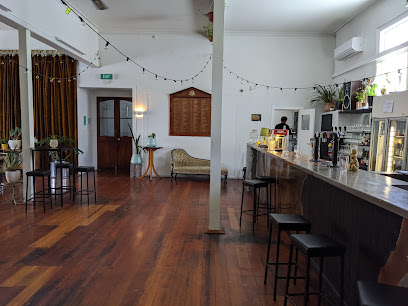
Sportz Bar
Discover the excitement at Sportz Bar in Whanganui, where sports, drinks, and gambling unite for an exhilarating experience.
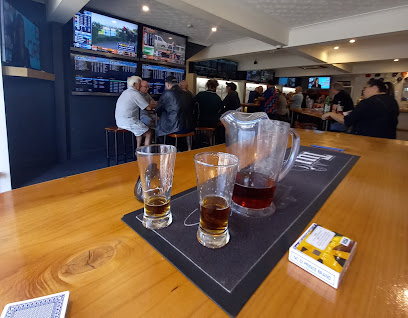
Commercial Hotel
Experience the heart of Whanganui at Commercial Hotel, a vibrant pub offering a warm atmosphere, delicious drinks, and a taste of local culture.
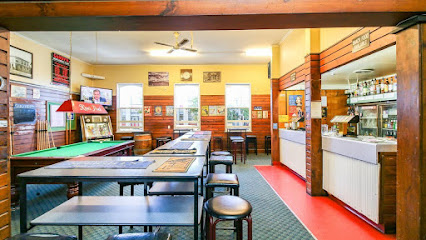
Shotz
Discover the lively bar scene at Shotz in Whanganui, where local culture and vibrant nightlife await every visitor.
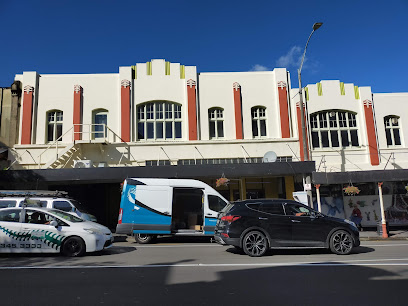
Lads Brewing Company Brewery Bar and Bottle Shop
Explore the rich flavors of craft beer at Lads Brewing Company, a premier brewery bar and bottle shop in Whanganui, New Zealand.
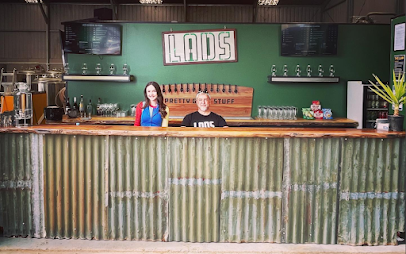
Local Phrases
-
- HelloKia ora
[key-ah or-ah] - GoodbyeHaere rā
[high-ree rah] - YesĀe
[eye] - NoKāore
[ka-oh-reh] - Please/You're welcomeWhakawhetai
[fah-kah-fay-tie] - Thank youKia ora
[key-ah or-ah] - Excuse me/SorryWhakama
[fah-kah-mah] - How are you?Kei te pēhea koe?
[key tay pay-hay-ah co-eh] - Fine. And you?Kei te pai. Ā, koe?
[key tay pie. eye, co-eh?] - Do you speak English?Kōrerotia te reo Pākehā e koe?
[kore-eh-roh-tee-ah teh reh-oh pah-keh-ha eh co-eh?] - I don't understandKāore au e āe
[ka-oh-reh oh eh eye]
- HelloKia ora
-
- I'd like to see the menu, pleaseMe tirohia te pānui, tēnā
[meh tee-raw-he-ah teh pah-noo-ee, teh-nah] - I don't eat meatKāore au e kai mīti
[ka-oh-reh oh eh kai mee-tee] - Cheers!Āraha!
[eye-rah-ha] - I would like to pay, pleaseMe utu au, tēnā
[meh oo-too oh, teh-nah]
- I'd like to see the menu, pleaseMe tirohia te pānui, tēnā
-
- Help!Āwhina!
[eye-fee-nah] - Go away!Haere atu!
[high-ree ah-too] - Call the Police!Karanga atu ki te Pirihimana!
[kah-rah-ngah ah-too kee teh pee-ree-hee-mah-nah] - Call a doctor!Karanga atu ki te doctor!
[kah-rah-ngah ah-too kee teh dock-tor] - I'm lostI wareware ahau
[ee wah-reh-wah-reh ah-how] - I'm illKa mate ahau
[kah mah-teh ah-how]
- Help!Āwhina!
-
- I'd like to buy...Me hoko au...
[meh haw-kaw oh...] - I'm just lookingKei te titiro ahau
[key tay tee-tee-raw ah-how] - How much is it?E hia te utu?
[eh hee-ah teh oo-too?] - That's too expensiveHe nui rawa te utu
[heh noo-ee rah-wah teh oo-too] - Can you lower the price?Ka taea e koe te whakaiti i te utu?
[kah tea-ah eh co-eh teh fah-kai-tee ee teh oo-too?]
- I'd like to buy...Me hoko au...
-
- What time is it?He aha te wā?
[heh ah-hah teh wah?] - It's one o'clockKotahi karaka
[koh-tah-hee kah-rah-kah] - Half past (10)Tekau me te rua tekau
[teh-kow meh teh roo-ah teh-kow] - MorningAtaahua
[ah-tah-hoo-ah] - AfternoonPō
[paw] - EveningAhiahi
[ah-hee-ah-hee] - YesterdayInāianei
[ee-nah-yah-nay] - TodayĀpōpō
[eye-paw-paw] - TomorrowĀpō
[eye-paw] - 1Tahi
[tah-hee] - 2Rua
[roo-ah] - 3Toru
[toh-roo] - 4Whā
[fah] - 5Rima
[ree-mah] - 6Ono
[oh-no] - 7Whitu
[fee-too] - 8Waru
[wah-roo] - 9Iwa
[ee-wah] - 10Tekau
[teh-kow]
- What time is it?He aha te wā?
-
- Where's a/the...?Kei hea te...
[key hay-ah teh...] - What's the address?He aha te wāhitau?
[heh ah-hah teh wah-hee-tow] - Can you show me (on the map)?Ka taea e koe te whakaatu mai i ahau (i te mahere)?
[kah tea-ah eh co-eh teh fah-kah-ah-too my ee ah-how (ee teh mah-heh-reh)] - When's the next (bus)?Āhea te wā (auta)?
[eye-heh teh wah (ow-tah)] - A ticket (to ....)He tiki (ki ...)
[heh tee-kee (kee ...)]
- Where's a/the...?Kei hea te...
History of Whanganui
-
Whanganui, one of New Zealand's oldest settlements, has been inhabited by Māori for hundreds of years. The Whanganui River, known to Māori as Te Awa Tupua, was a crucial resource for early Māori communities. It served as a primary means of transport, food source, and spiritual symbol. The river is deeply woven into the whakapapa (genealogy) and identity of local iwi (tribes) such as Te Āti Haunui-a-Pāpārangi.
-
European exploration of Whanganui began in the early 19th century. The first Europeans to arrive were missionaries and traders, followed by settlers. The town of Whanganui was founded in 1840, initially named Petre after Lord Petre, a director of the New Zealand Company. However, the name Whanganui, meaning 'big harbour' or 'big bay', became the official name after 1854 due to its widespread use and cultural significance.
-
The Whanganui River Wars were a series of conflicts between 1845 and 1864 involving Māori and British colonial forces. Tensions arose due to land disputes and the imposition of British laws on Māori communities. Significant battles occurred, including the Battle of Moutoa Island in 1864, where Māori loyal to the Crown fought against Māori insurgents. These conflicts had a lasting impact on the region and its people.
-
Whanganui thrived during the late 19th and early 20th centuries due to its strategic location on the river and burgeoning industries such as agriculture, milling, and shipping. The river facilitated the transport of goods and people, leading to the growth of the town as a commercial hub. Whanganui became known for its vibrant markets, bustling port, and an array of businesses ranging from wool processing to meatpacking.
-
In recent decades, Whanganui has experienced a cultural renaissance, marked by the revitalization of Māori traditions and the arts. The Whanganui River has been legally recognized as a living entity, granting it the same rights as a person, a landmark decision reflecting the deep connection between the river and the local iwi. The city is also home to a thriving arts scene, with numerous galleries, studios, and cultural festivals celebrating its rich heritage.
-
Whanganui boasts a wealth of architectural heritage, with many well-preserved buildings from the Victorian and Edwardian eras. Significant landmarks include the Durie Hill Elevator, built in 1919, which remains one of the few public transport elevators in the world. The Sarjeant Gallery, an iconic neoclassical building, and the Royal Wanganui Opera House, the last Victorian theatre still in use in New Zealand, are also notable examples of the city's historical architecture.
-
Whanganui is renowned for its educational institutions, most notably Whanganui Collegiate School, established in 1854. This prestigious secondary school has educated many prominent New Zealanders. The city is also home to the Whanganui Regional Museum and the Whanganui UCOL (Universal College of Learning), which contribute to the intellectual and cultural vibrancy of the region.
-
Whanganui is surrounded by stunning natural landscapes, including the Whanganui National Park. The park encompasses vast tracts of native forest and the upper reaches of the Whanganui River, offering numerous outdoor activities such as tramping, kayaking, and bird watching. The region's natural beauty and biodiversity make it a popular destination for nature enthusiasts and adventurers.
Whanganui Essentials
-
Whanganui is located on the west coast of New Zealand's North Island. The nearest major airport is Wellington International Airport, approximately 200 kilometers south of Whanganui. From Wellington, you can take a domestic flight to Whanganui Airport, which is about a 10-minute drive from the city center. Alternatively, you can drive or take a bus from Wellington to Whanganui, which typically takes around 2.5 to 3 hours by road. Another option is to take a bus from Auckland, which takes approximately 7 hours.
-
Whanganui offers several transportation options. The city is compact and many attractions are within walking distance. Local buses operated by Horizons Regional Council connect different parts of the city and surrounding areas. Taxis and rideshare services like Uber are available for convenient travel within the city. For those looking to explore beyond Whanganui, renting a car is a practical option. The town is well-connected by State Highway 3, making road trips to nearby destinations easy.
-
The official currency in New Zealand is the New Zealand Dollar (NZD). Credit and debit cards are widely accepted in Whanganui, including at most hotels, restaurants, and shops. ATMs are readily available throughout the city. It's advisable to carry some cash for smaller establishments and markets that may not accept cards. Most places accept contactless payments, making transactions quick and convenient.
-
Whanganui is generally a safe destination for tourists. However, like any place, it is important to take standard safety precautions. Avoid walking alone at night in poorly lit areas and keep an eye on your belongings in crowded places. While Whanganui does not have specific high-crime areas targeting tourists, it is always best to stay vigilant and aware of your surroundings.
-
In case of an emergency, dial 111 for immediate assistance from police, fire, or ambulance services. Whanganui Hospital is the main medical facility in the area, offering emergency medical care. Pharmacies are available in the city for minor health issues and over-the-counter medications. It is recommended to have travel insurance that covers medical emergencies. Additionally, familiarize yourself with the locations of local police stations and medical facilities.
-
Fashion: Do dress comfortably and appropriately for the weather, but avoid overly revealing clothing. Smart casual attire is suitable for most occasions. Religion: Do respect local customs and traditions, especially when visiting places of worship. Public Transport: Do be courteous to fellow passengers and give up your seat to those in need. Don't play loud music or speak loudly. Greetings: Do greet people with a friendly 'hello' or 'kia ora', which is a traditional Māori greeting. Eating & Drinking: Do try local cuisine and be open to new culinary experiences. Don't be afraid to ask locals for dining recommendations.
-
To experience Whanganui like a local, visit the River Traders Market held every Saturday along the Whanganui River. It's a great place to buy local produce, crafts, and enjoy street food. Take a leisurely walk or bike ride along the Whanganui River Whanganui River Walkway, which offers beautiful views and a glimpse into the city's history. Engage with locals, who are often friendly and willing to share insights about the area. Don't miss out on visiting the Whanganui Regional Museum and the Durie Hill Elevator for a unique experience.
Trending Landmark in Whanganui
-
Trafalgar Square Shopping Centre
-
Rutland Arms Inn
-
Whanganui River Markets
-
The Citadel Cafe
-
Mud Ducks
-
The Yellow House Cafe
-
Stellar Restaurant & Bar
-
Durie Hill Elevator
-
Speedway Garage & The Cobb Whanganui
-
Bason Botanic Gardens
-
Whanganui River TOP 10 Holiday Park
-
Whanganui Seaside Holiday Park
-
Whanganui Regional Museum
-
War Memorial Tower
-
Castlecliff Beach
Nearby Cities to Whanganui
-
Things To Do in Palmerston North
-
Things To Do in Masterton
-
Things To Do in New Plymouth
-
Things To Do in Wellington
-
Things To Do in Taupo
-
Things To Do in Napier
-
Things To Do in Blenheim
-
Things To Do in Nelson
-
Things To Do in Rotorua
-
Things To Do in Hamilton
-
Things To Do in Tauranga
-
Things To Do in Gisborne
-
Things To Do in Kaikoura
-
Things To Do in Auckland
-
Things To Do in Greymouth









